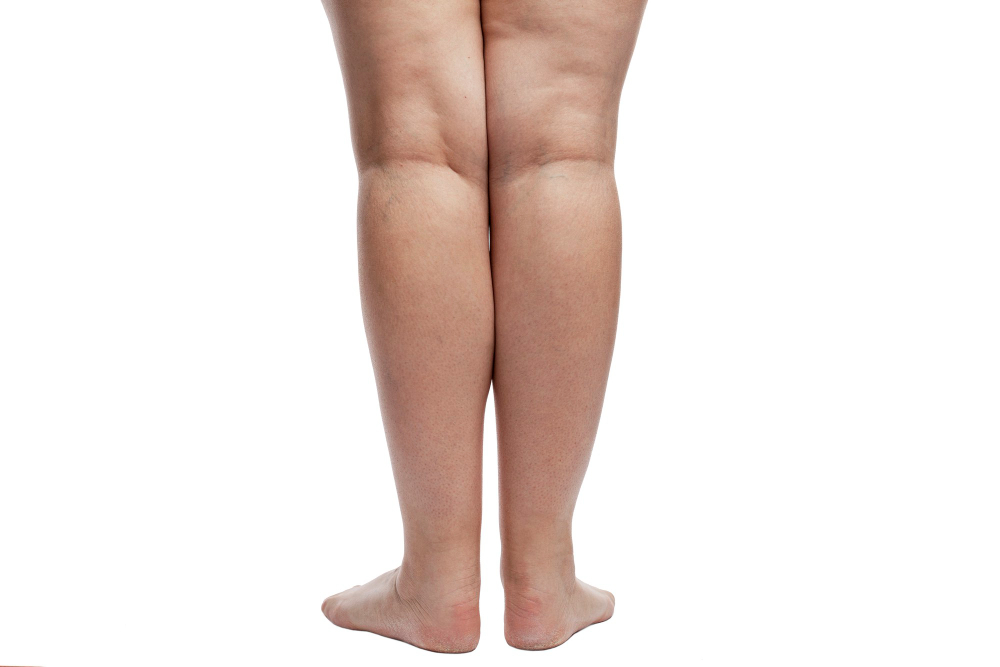Lipedema
What is Lipedema?
Lipedema is a disease characterized by excessive increase in fat tissue in the legs compared to the body.
It is genetically inherited and it is very likely to be found in the family or relatives. The disease affects the legs, but one of every 3 patients with lipodema also has involvement of the arms.
This disease is more common in women and rarely affects men.
Unfortunately, since it is a newly recognized condition, it is often not recognized by the physicians consulted, and therefore it is confused with obesity, lymphedema or other vascular disorders, and patients are advised to lose weight and do sports. Even if the patients lose weight, the picture does not improve, and the patients gain weight due to the deteriorated metabolic status and severe psychological stress, and the picture becomes more severe as they gain weight.
In a study, its incidence was reported as 5-10% in the community, and detailed scientific studies have not been completed yet, research continues.
What are the differences between lipodema-obesity-lymphedema, how can we distinguish them?
Unlike lymphedema, in lipodema, the back of the hands and feet do not accompany the disease, it appears completely normal. In lymphedema, the back of the hand and foot appears swollen. While there is no pitting edema in lipodema, there is also pitting edema in the legs in lymphedema.
In obesity, fat storage is evenly distributed throughout the body. When weight is lost, improvement is achieved. In lipodema, even if the patients lose weight, the excessive fat in the legs and arms, if any, will not improve.
What I observed in my patients with advanced lipedema is that sometimes obesity and lymphedema accompany the lipedema picture.
How to diagnose
The diagnosis is made entirely by physical examination and information obtained from the patient, and the experience of the physician is very valuable in this regard.
If the disease has progressed at the time of diagnosis, lipodema may now be accompanied by similar conditions such as lymphedema or obesity, or metabolic diseases due to weight gain (chronic hypertension, diabetes, heart diseases, circulatory disorders, etc.). In addition, most of our patients are accompanied by psychological deterioration, depression, anxiety disorder, and conditions that detach the person from social life.
Is There a Cure for the Disease?
There are 4 stages in lipodema, your doctor will determine the stage by examination. The sooner the disease is recognized, that is, the earlier it is in its early stages, the easier and quicker the treatment; the result will be just as frustrating.
Since the cause is not known exactly, there is no clear and single treatment. In stage 1, compression garments such as varicose stockings and weight control may be sufficient, while in stages 2-3 and 4, surgical method is applied.
The surgical treatment is Liposuction. The experience of the surgeon who will perform the surgery is important here, it is important to use the equipment (cannulas) to be used and, if necessary, additional technology (Vaser or Laser) in place and correctly.
It is extremely important for patients to use printed clothes for a longer period of time than other patients after surgical treatment, to place sports and diet at the center of their lives, and to raise awareness.
What are the chances of success of lipoedema treatment?
Both in the control follow-ups of the patients we have operated on, and according to the cases reported in international articles, postoperative pain relief and improvement in body shape of the patients are evident. However, if it is not possible for these patients to be treated in a single session, it will increase their chances of success if they complete their treatment even in sessions, pay attention to their sports and diet as recommended by their physician, and follow other recommendations.
 Türkçe
Türkçe English
English Deutsch
Deutsch عربي
عربي
